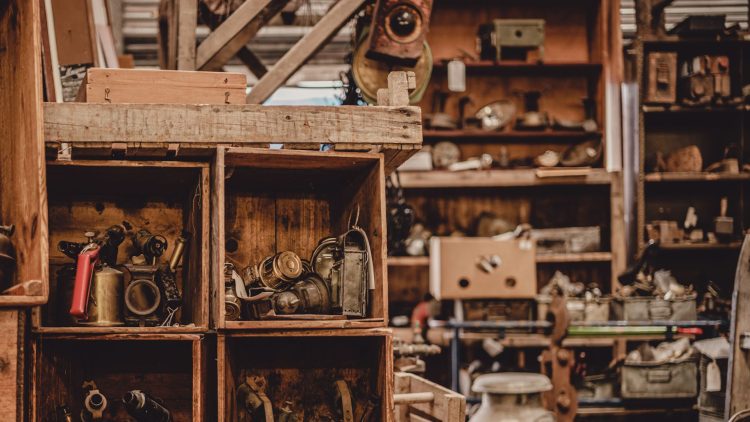The world of collecting has always been influenced by broader global trends. Whether it’s shifting political landscapes, fluctuating economic conditions, or evolving social preferences, these factors have a significant impact on the types of items collectors are drawn to, how they engage with the market, and the strategies they use for buying and selling. As we move through 2025, we’re witnessing an era of transformative change, where the interplay of political, economic, and social trends is reshaping the collectibles market in profound ways. In this article, we’ll examine how these global trends have impacted the world of collecting and what we can expect in the near future.
1. The Political Landscape and Its Effect on Collecting
Political events and shifts have always had a significant impact on the collectibles market. From the regulation of trade in cultural artifacts to the impact of international conflicts on the art world, the intersection of politics and collecting is a critical factor that collectors need to understand.
a) Global Political Instability and Rare Art
Political instability, such as civil wars, territorial disputes, and tensions between major powers, often influences the movement of rare and valuable art. For example, in times of conflict, the black market for art and cultural artifacts tends to grow as items are looted or illegally exported. Collectors in more stable countries may look to acquire pieces that are at risk of being lost, adding value to items from conflict zones. In 2025, this phenomenon is still visible, as collectors seek out art from regions affected by political unrest, such as Ukraine and Syria, where heritage sites and cultural artifacts have become both symbols of resistance and commodities for sale.
However, it’s not just instability that impacts the art market. Political policies around the world are becoming increasingly stringent on the provenance of art, especially when it comes to looted or stolen artifacts. Laws such as the 1970 UNESCO Convention on the Means of Prohibiting and Preventing the Illicit Import, Export, and Transfer of Ownership of Cultural Property are gaining more attention globally, with more countries ensuring their cultural treasures are returned to their place of origin. This trend is expected to have a more significant influence on the market as buyers and institutions are held more accountable for the ethical sourcing of their collections.
b) Regulation of Collectibles Markets
On the other hand, governments are imposing new regulations on the collectibles market, particularly regarding high-value items like rare coins, classic cars, and rare stamps. The introduction of new taxes and duties in several countries, along with increasing scrutiny over auction houses and online marketplaces, is shaping the way collectibles are bought and sold. In 2025, countries are becoming more aggressive in monitoring the international flow of luxury goods, as they seek to curb money laundering and tax evasion.
This has led to more transparency in the collectibles market, though it has also made it harder for smaller collectors to enter the market without paying higher transaction fees and taxes. It’s likely that stricter regulations around provenance and documentation of high-value items will continue to shape the market in the coming years.
2. Economic Trends and Their Impact on Collecting
Economic conditions are among the most significant global trends affecting collecting. In 2025, the world is navigating an increasingly complex economic landscape, shaped by inflation, recessions, and global supply chain disruptions. These factors are influencing both the demand for collectibles and how collectors approach their investments.
a) Inflation and the Search for Tangible Assets
As inflation continues to rise in many parts of the world, investors are increasingly turning to collectibles as a hedge against economic uncertainty. In a time of rising living costs and devaluation of currencies, tangible assets like rare art, vintage watches, luxury cars, and even sports memorabilia are being viewed as safe investments. This has led to a surge in interest in high-value collectibles, especially from investors who view them as a stable store of wealth.
In 2025, the increasing popularity of alternative investments, including rare physical items, is pushing more individuals to enter the collectibles market. Whether it’s rare comic books, fine wine, or classic cars, collectors are seeking assets that not only have aesthetic value but also long-term financial returns. For example, collectors who historically focused on art are now diversifying into collectibles like vintage luxury watches, realizing that these assets offer stability and growth potential.
b) The Impact of the Global Economic Slowdown on Auction Prices
A global economic slowdown, combined with increased interest rates and tighter financial conditions, has led to a mixed impact on the collectibles market. While certain sectors of the market, like fine art, have continued to see strong performance, other categories of collectibles have faced pressure. Items such as rare coins and limited-edition luxury goods, which were once seen as “easy” investments, are seeing more volatile price movements as collectors become more discerning in their purchasing decisions.
Additionally, economic uncertainty has made many buyers more cautious, meaning that only the most well-documented, historically significant, or highly desirable items are fetching top dollar at auction. Auction houses in 2025 are shifting their focus toward more niche markets and focusing on offering rare, high-quality items that are likely to maintain or appreciate in value, ensuring they are protected from broader economic declines.

3. Social Changes and Their Influence on Collecting Culture
Social trends are just as influential as political and economic factors in shaping the collectibles market. From the rise of internet culture to the increasing emphasis on sustainability, collectors in 2025 are navigating a new social landscape that influences what they collect, how they collect, and why they collect.
a) The Influence of Social Media on Collecting Trends
The role of social media in shaping collecting culture has been growing for years, but in 2025, it has become an integral part of the market. Platforms like Instagram, TikTok, and YouTube have given rise to a new generation of “influencer collectors” who are shaping market trends and the types of items that are popular at any given time. Whether it’s a limited-edition sneaker, a rare Pokémon card, or a unique pop culture artifact, social media influencers have the power to drive demand and influence auction prices.
The ease of sharing information, images, and videos related to collectibles has democratized collecting, with younger generations now more engaged in the process. For example, the #artcollecting hashtag on Instagram has gained massive traction, with collectors showcasing their acquisitions and fostering a sense of community. This has led to increased visibility for certain types of collectibles and the growth of niche communities.
b) The Rise of Sustainable Collecting
Sustainability is a growing consideration for modern collectors, especially among younger buyers. In response to environmental concerns, many collectors are moving away from purchasing mass-produced items and focusing on collecting rare, vintage, and sustainable products. Whether it’s upcycled fashion, eco-conscious art, or vintage furniture, there’s a growing preference for items that have a low environmental footprint.
For example, in 2025, the market for sustainable fashion, which includes vintage clothing and accessories, has grown significantly. Collectors are increasingly turning to items that are both fashionable and sustainable, as they align their collecting habits with their ethical values. In a similar vein, eco-conscious art has gained popularity, with artists using recycled materials or working within sustainability parameters to produce their works.
The increasing demand for eco-friendly collectibles is pushing the market to evolve, with more platforms and auction houses dedicated to sustainable items. Collectors, particularly Millennials and Gen Z, are now seeking out items that not only have aesthetic or historical value but also align with their values of reducing waste and supporting environmental causes.
4. Technological Innovations and Their Impact on the Market
Technological advancements are another driving force in the 2025 collectibles market. From the introduction of blockchain technology to the rise of artificial intelligence and augmented reality, technology is reshaping how collectibles are created, bought, sold, and enjoyed.
a) Blockchain and NFTs in Collecting
One of the most transformative technological trends in the collectibles market has been the rise of NFTs (non-fungible tokens), which have revolutionized the concept of ownership. NFTs, primarily in the form of digital art, have provided a new way for collectors to acquire and verify ownership of rare and one-of-a-kind items. In 2025, NFTs have moved beyond the art world and are now being integrated into collectibles like sports memorabilia, music, and virtual real estate.
Blockchain technology, which powers NFTs, provides an immutable record of ownership, ensuring that the provenance of a collectible is transparent and verifiable. As the technology continues to evolve, NFTs are being used in ways that enhance the collectibles market, such as integrating them into virtual galleries or providing exclusive access to in-person experiences tied to digital items.
b) The Role of Augmented and Virtual Reality in Collecting
Augmented reality (AR) and virtual reality (VR) are also changing the way collectors interact with their items. In 2025, AR technology allows collectors to virtually display their collections in their homes before making a purchase. Meanwhile, VR is being used by museums and galleries to create immersive experiences that allow potential buyers to view and interact with rare and valuable items from the comfort of their own homes.
For example, VR auctions are becoming more popular, allowing participants to attend virtual auction rooms where they can bid on physical or digital collectibles. This technology has helped expand the market globally, making it more accessible to international buyers and enhancing the experience of collecting.
5. Conclusion
As we move through 2025, the collectibles market is being shaped by a combination of global political, economic, social, and technological trends. From the impact of political instability on art markets to the rising demand for digital collectibles, it’s clear that the landscape of collecting is undergoing significant change. Economic fluctuations, shifting social values, and the introduction of new technologies are all contributing to an evolving market that is more diverse and global than ever before.
In order to navigate this new era of collecting, collectors must stay informed about these global trends and how they shape the market. By understanding the broader forces at play, collectors can make more informed decisions and position themselves for success in a rapidly changing world.

















































